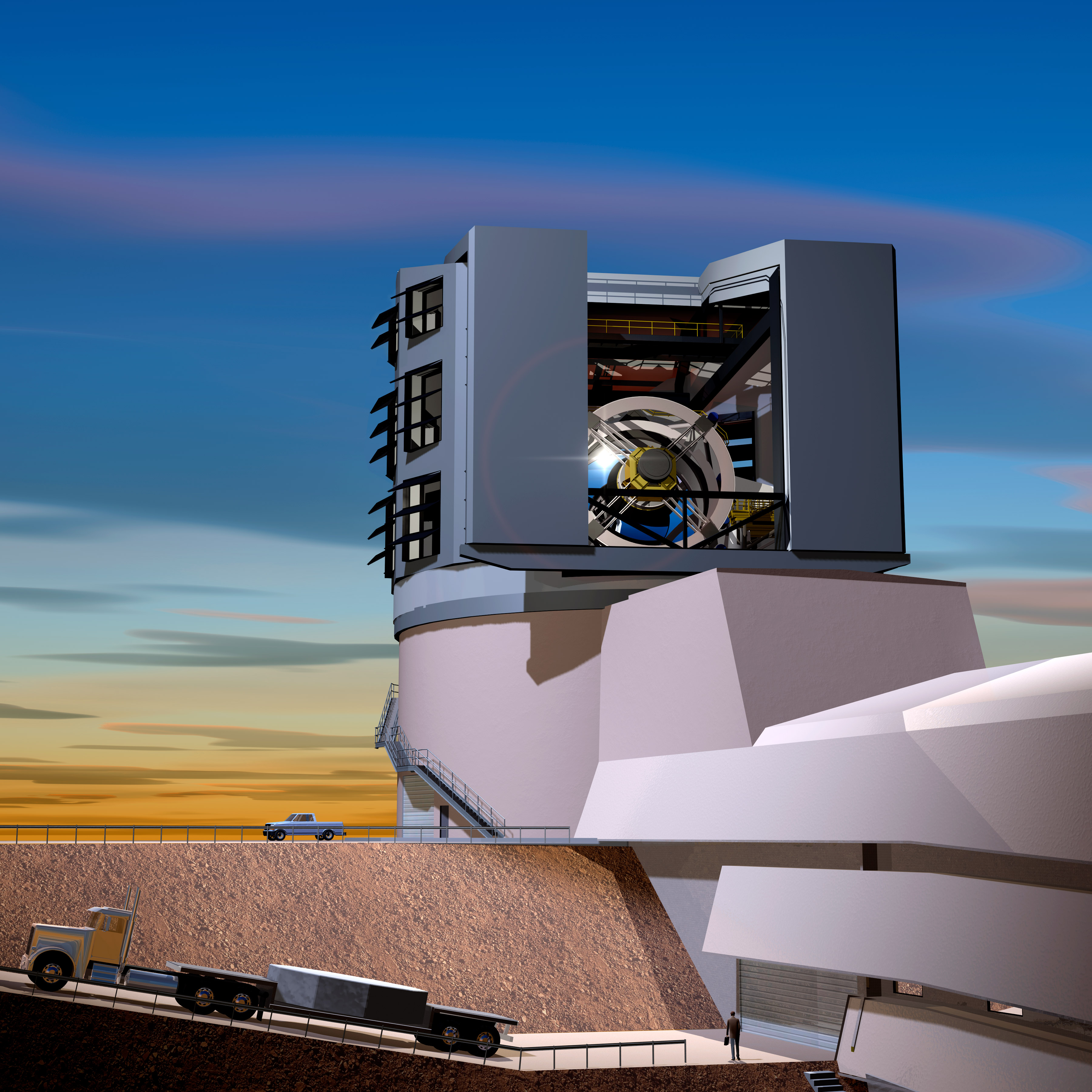Vera C. Rubin Observatory
Rubin Observatory consists of an integrated system that combines an 8.4-meter primary mirror, the world’s largest digital camera, a complex data processing system, and an online education platform. Rubin Observatory takes advantage of new technologies to provide a qualitatively new capability for astronomy.
LSST
The ten-year Rubin Observatory Legacy Survey of Space and Time (LSST) will image billions of objects in six colors. This survey, which will cover over half the sky, also records the time evolution of these sources: the first motion picture of our Universe.
Simonyi Survey Telescope
Rubin Observatory houses the Simonyi Survey Telescope, an 8.4-meter telescope with a novel, three-mirror design. The Telescope's compact shape allows it to move quickly from one point in the sky to the next. It will image the sky continuously each night, on an automated cadence, and over the course of the ten-year survey will collect about 800 images of each location in the sky.
LSST Camera
The Rubin Observatory LSST Camera is the largest digital camera ever constructed for the field of astronomy. The size of a small car and weighing more than 3 tons, the 3200-megapixel camera will produce images so large that 1500 high-definition TV screens would be required to view each one.


